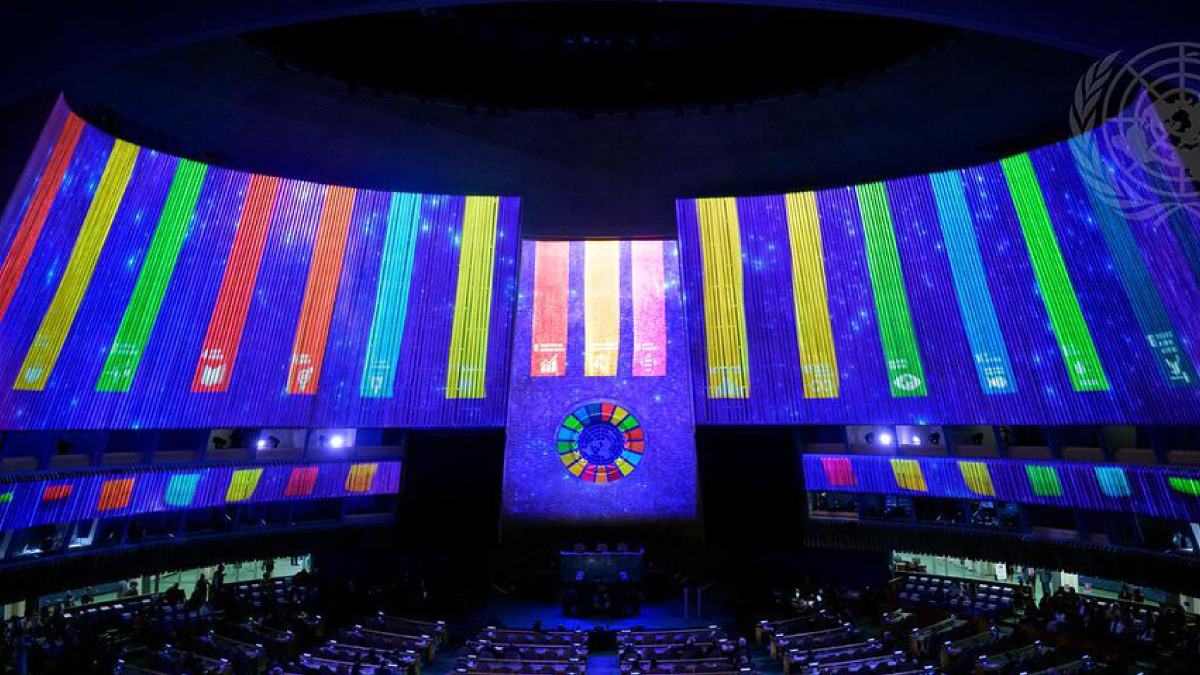Potential wind slowdown threatens renewable energy and fuels heat domes – Mongabay

Impact of Climate-Induced ‘Global Stilling’ on Sustainable Development Goals
Introduction: Climate Change and the Phenomenon of ‘Global Stilling’
Climate change is identified as a potential driver for a long-term reduction in global wind speeds, a phenomenon termed “global stilling.” A warming atmosphere is believed to weaken the atmospheric forces that generate wind, leading to more frequent and prolonged periods of still air, or “wind droughts.” This trend directly challenges the core objectives of SDG 13 (Climate Action) by introducing a complex climatic shift with wide-ranging consequences.
- Historical data indicates a general slowdown in wind speeds from the 1960s until approximately 2010.
- While a temporary increase has been observed since 2010, climate models project a long-term decline in average global wind speeds.
- Significant scientific uncertainty remains in these projections due to the complexity of global climate interactions.
Threat to SDG 7: Affordable and Clean Energy
The projected decline in average wind speeds poses a direct and significant threat to the global transition to renewable energy, undermining progress toward SDG 7 (Affordable and Clean Energy). Reduced wind velocity compromises the efficiency and reliability of wind power, a critical component of clean energy infrastructure.
- Disruption to Energy Systems: A long-term decline in wind speeds could cause substantial disruptions to renewable energy systems that rely on wind turbines.
- High-Risk Infrastructure: An estimated 20% of the world’s wind turbines are situated in regions identified as having a high risk of experiencing future record-breaking wind droughts.
- Projected Energy Reduction: In Europe, projections indicate that energy production from wind power could decrease by as much as 10% by the year 2100 due to this phenomenon.
Ramifications for SDG 3 (Good Health) and SDG 11 (Sustainable Cities)
The consequences of “global stilling” extend to public health and urban sustainability, creating conditions that are detrimental to achieving SDG 3 (Good Health and Well-being) and SDG 11 (Sustainable Cities and Communities).
- Worsened Air Quality: Stagnant air resulting from weak winds prevents the dispersal of air pollution. This leads to higher concentrations of harmful pollutants in urban and industrial areas, increasing the risk of respiratory and other diseases.
- Intensified Heat Waves: Reduced wind flow contributes to the formation of “heat domes,” where hot air becomes trapped over a region. This exacerbates heat waves, leading to a dangerous rise in local temperatures that threatens human health and strains urban infrastructure.
Compounding Climate Challenges and Impacts on SDG 14 (Life Below Water)
Weakening winds create a feedback loop that can worsen other impacts of climate change, presenting further obstacles to SDG 13 (Climate Action) and affecting marine ecosystems, a key concern of SDG 14 (Life Below Water).
- Marine Heat Waves: The combination of ocean warming and weak winds can intensify marine heat waves, causing severe and lasting damage to marine life and ecosystems.
- Paradox of Extremes: While average wind speeds are projected to decline, the frequency of extreme wind events, such as powerful hurricanes, is increasing. This highlights the complex and often contradictory nature of climate change impacts.
Analysis of Sustainable Development Goals in the Article
1. Which SDGs are addressed or connected to the issues highlighted in the article?
-
SDG 7: Affordable and Clean Energy
The article directly addresses this goal by discussing the impact of slowing wind speeds on renewable energy systems. It highlights how “global stilling” could cause “potential disruptions to renewable energy systems worldwide” and lead to a decrease in energy production from wind turbines, which is a key source of clean energy.
-
SDG 13: Climate Action
This is the central theme of the article. The entire piece explains how climate change is the root cause of slowing global wind speeds (“Climate change may be causing long-term global wind speeds to slow down”). It discusses the consequences of this phenomenon, such as extreme weather events, linking directly to the need for urgent action to combat climate change and its impacts.
-
SDG 3: Good Health and Well-being
The article connects the environmental changes to human health. It states that slowing winds can lead to a “dangerous rise in local temperatures” and “worsening air pollution” because stagnant air “prevents air pollution from dispersing.” It also mentions the creation of “heat domes,” which are regions of intense heat, posing significant health risks.
2. What specific targets under those SDGs can be identified based on the article’s content?
-
Target 7.2: By 2030, increase substantially the share of renewable energy in the global energy mix.
The article’s focus on the potential decline in wind energy production directly relates to this target. It warns that “projections suggest energy production could decrease by up to 10% by the year 2100 as a result of reduced power output from wind turbines.” This highlights a significant challenge to increasing the share of renewable energy.
-
Target 13.1: Strengthen resilience and adaptive capacity to climate-related hazards and natural disasters in all countries.
The article describes several climate-related hazards exacerbated by changing wind patterns, including “wind droughts,” “extreme wind events like Category 5 Hurricane Melissa,” “heat waves,” and “heat domes.” The disruption to power grids from low winds is another example of a climate-related hazard that requires enhanced resilience.
-
Target 3.9: By 2030, substantially reduce the number of deaths and illnesses from hazardous chemicals and air, water and soil pollution and contamination.
This target is relevant because the article explicitly states that weak winds can lead to “worsening air pollution” as stagnant air traps pollutants. This directly increases the risk of illnesses related to poor air quality.
-
Target 3.d: Strengthen the capacity of all countries, in particular developing countries, for early warning, risk reduction and management of national and global health risks.
The article points to new and intensified health risks like “dangerous” heat waves and “heat domes” caused by a combination of global warming and weak winds. Understanding and forecasting these phenomena, as discussed by the scientists in the article, is crucial for developing early warning systems to manage these health risks.
3. Are there any indicators mentioned or implied in the article that can be used to measure progress towards the identified targets?
-
Indicator for Target 7.2:
A direct quantitative indicator is mentioned: the projected percentage change in energy production from wind power. The article states that “in Europe, projections suggest energy production could decrease by up to 10% by the year 2100.” This metric can be used to track the impact of climate change on renewable energy output.
-
Indicator for Target 13.1:
The article implies several indicators for measuring climate-related hazards. These include:
- The frequency and duration of “wind droughts” or periods of “global stilling.”
- The frequency and intensity of extreme weather events, such as “Category 5 Hurricane Melissa,” “heat domes,” and “marine heat waves.”
-
Indicator for Targets 3.9 and 3.d:
The article implies indicators related to health risks. These include:
- Measurements of air pollution levels during periods of low wind speed to track the “worsening air pollution.”
- Data on the frequency, intensity, and duration of “heat domes” and “heat waves” to assess the risk of heat-related illnesses and deaths.
4. Summary Table of SDGs, Targets, and Indicators
| SDGs | Targets | Indicators |
|---|---|---|
| SDG 7: Affordable and Clean Energy | Target 7.2: Increase substantially the share of renewable energy in the global energy mix. | Percentage change in energy production from wind power (e.g., projected decrease of up to 10% in Europe by 2100). |
| SDG 13: Climate Action | Target 13.1: Strengthen resilience and adaptive capacity to climate-related hazards and natural disasters. | Frequency and intensity of climate-related hazards such as “wind droughts,” “heat domes,” and extreme hurricanes. |
| SDG 3: Good Health and Well-being | Target 3.9: Substantially reduce deaths and illnesses from air pollution.
Target 3.d: Strengthen capacity for early warning and management of global health risks. |
Levels of air pollution during periods of low wind; frequency and intensity of dangerous heat waves and heat domes. |
Source: news.mongabay.com
What is Your Reaction?
 Like
0
Like
0
 Dislike
0
Dislike
0
 Love
0
Love
0
 Funny
0
Funny
0
 Angry
0
Angry
0
 Sad
0
Sad
0
 Wow
0
Wow
0



















































.jpg.webp?itok=0ZsAnae9#)
























